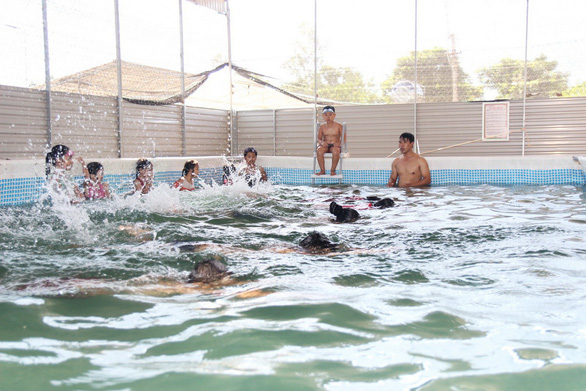As summer ramps up, so do reports of children drowning in Vietnam.
Unceasing reports of children drowning in Vietnam’s rivers and lakes is a clear indicator that country’s efforts to ramp up water safety education in public schools is ineffective, particularly in light of the multiple drowning incidents in May alone.
According to a 2018 report released by the Ministry of Labor, War Invalids and Social Affairs, drowning is a leading cause of death among children in the Southeast Asian country, claiming the lives of more than 2,000 kids each year from 2015-2017.
Experts say inability to swim, poor supervision, and natural disasters are to blame for this tragic figure.
Build a pool, save a life
Nghe An, located in north-central Vietnam, ranks near the top of Vietnamese provinces in terms of student deaths caused by drowning, an issue local officials are scrambling to curb, according to Thai Van Thanh, director of the Nghe An department of education.
Thanh admitted that although many local schools are taking a shot at offering swim lessons to students the “education sector cannot undertake this task by itself.”
There are many limitations to teaching children how to swim at school, most notable of which is a lack of swimming pools and qualified swim instructors.
Only a few schools in the province have the financial means to invest in building a swimming pool while those that do are hard up to find someone capable of offering lessons.
Thanh also shared that schools across the country have begun investing mobile swimming pools – a low cost pool that can be built for just VND150 million (US$6,400) but tends to only last a short time.
Those schools that are willing to pony up VND 1 billion (US$43,000) for a traditional swimming pool are also hard pressed to find a suitable amount of land on which to build it.
Regardless, instead of simply offering theories and debating finances during discussion on how the province can solve its drowning epidemic, Thanh says it’s time to start investing in proper facilities and instructors which can really make a dent in the issue.
Adult intervention
Quang Binh, a province in central Vietnam, has a different approach towards teaching its children to swim.
The province, which spent the past week reeling from the deaths of nine children in four different drowning cases, hopes that bringing parents and families into the water safety discussion will help solve the problem.
“To keep the children completely safe, we need the cooperation of families and authorities,” said local school headmaster Mai Thi Kim Oanh.
Following a recent case of two elementary school student drowning in Tan Hoa Commune, local schools warned their students to be careful and asked teachers to speak with their students about water safety.
Oanh added that elementary schoolers tend to be very energetic and haven’t developed the maturity to evaluate the safety of certain situations.
Over the past few years, the Quang Binh education department has experimented with several initiatives designed to teach children how to swim, but not all local students have been able to participate, according to department head Dinh Quy Nhan.
Swimming is not the only skill against drowning
According to Tran Nhat Phuong, a teacher at Tran Van On Secondary School in District 1, Ho Chi Minh City, simply teaching children how to swim is not enough to save them from drowning.
Phuong says what children really need are lesson specific aimed at drowning prevention, considering even skilled swimmers can find themselves in dangerous situations.
“At school, we teach students that they should never go swimming without being accompanied by an adult,” Phuong said, adding that children should not swim in flooded areas and avoid jumping into water when they aren’t sure how deep it is.
Most importantly, students need to be taught to stay calm in dangerous situations, call for help, and let their bodies float in the water as they turn facing upwards in order to help them preserve energy.
When children see someone in danger of drowning, they should look for a rope or branch to help the victim, not just jump into water the water.
Like us on Facebook or follow us on Twitter to get the latest news about Vietnam!



















































